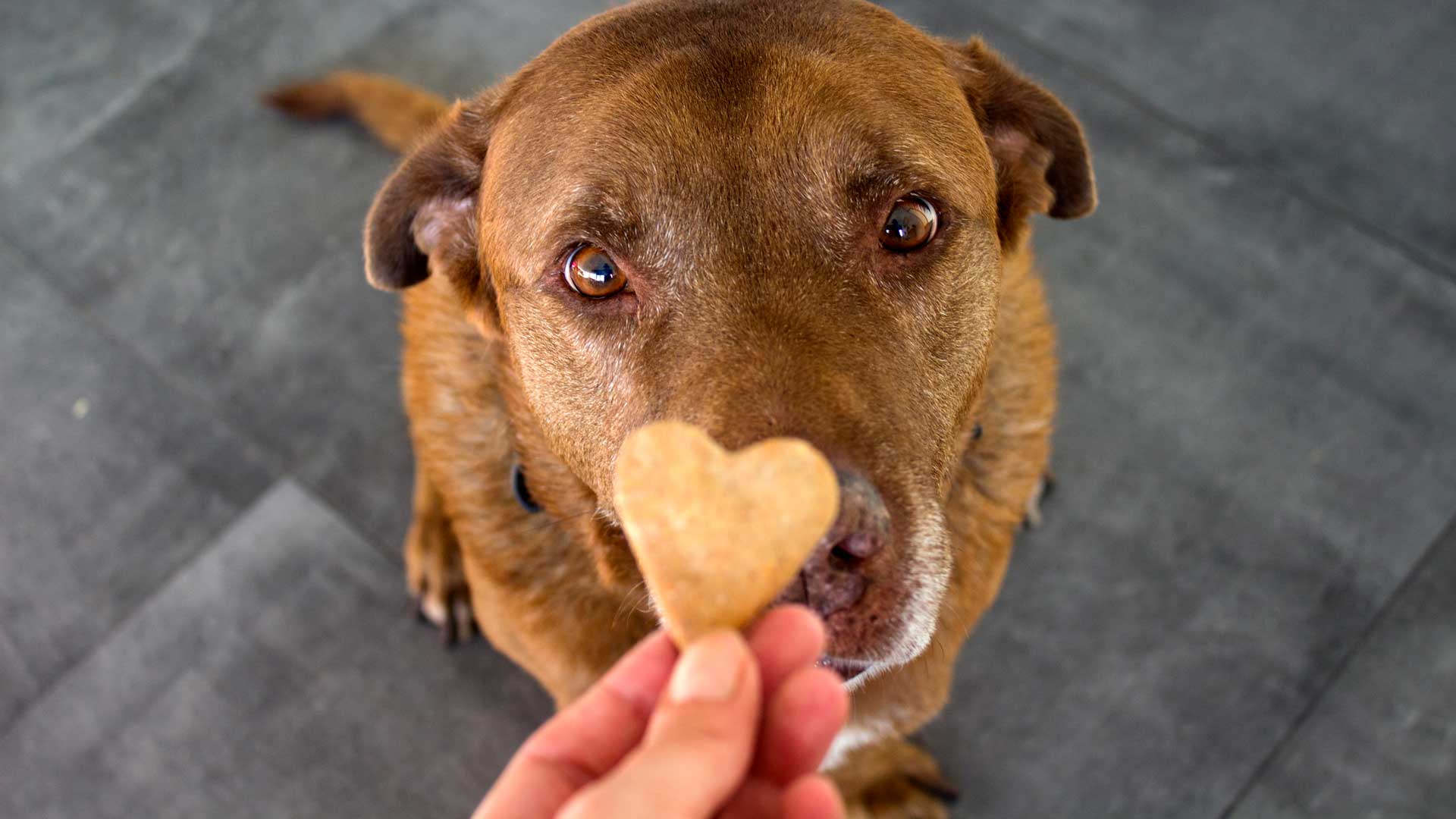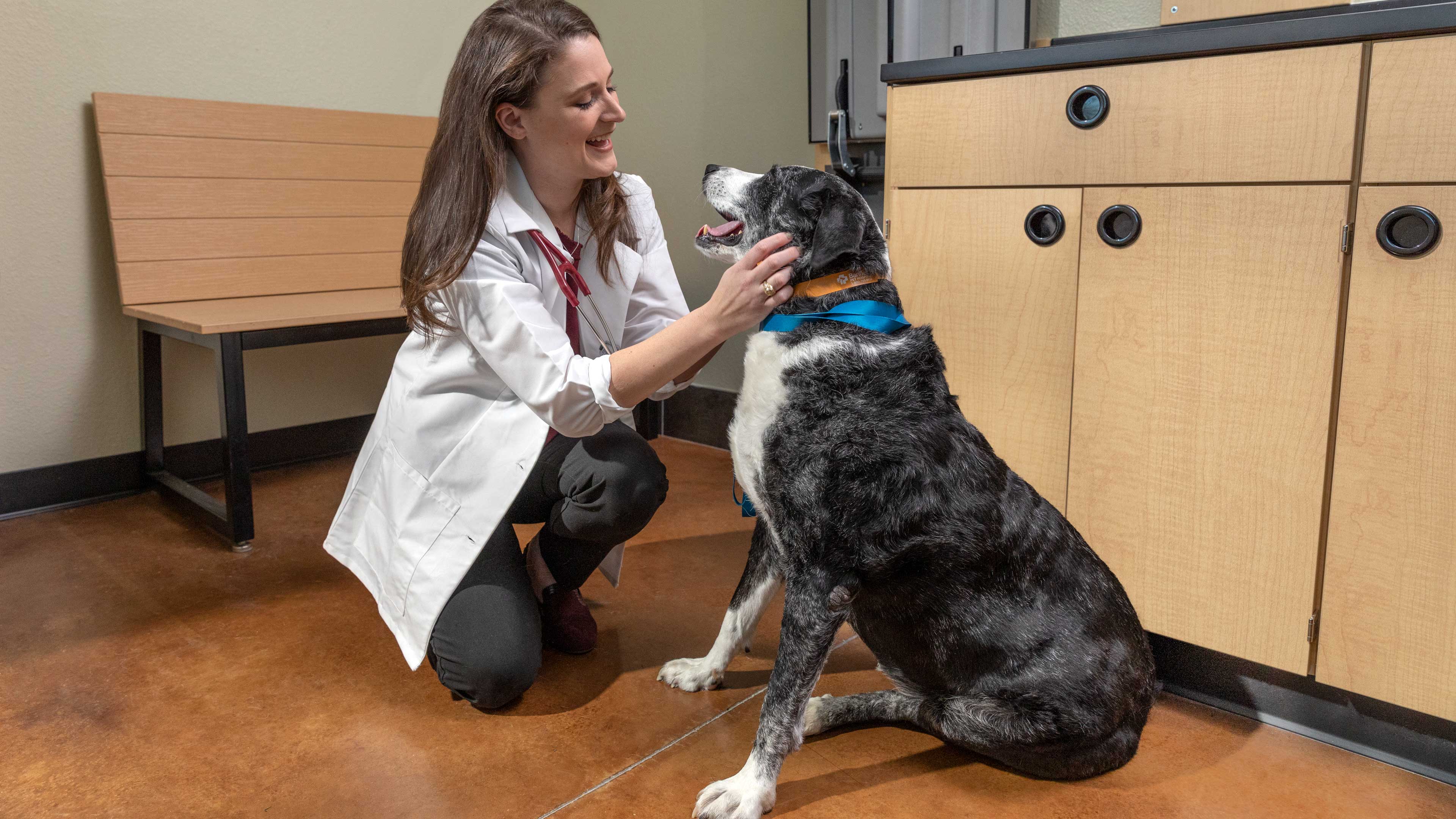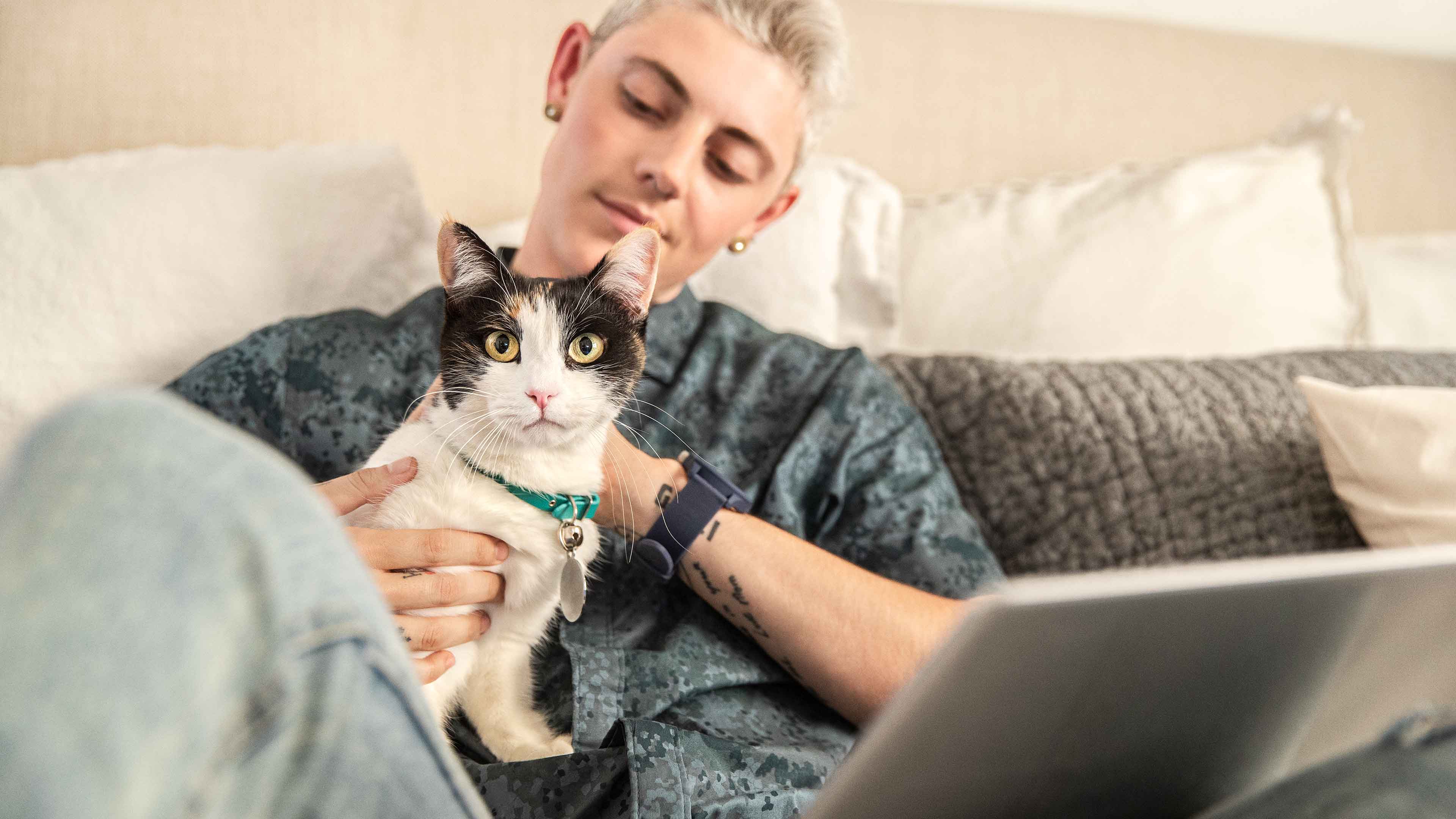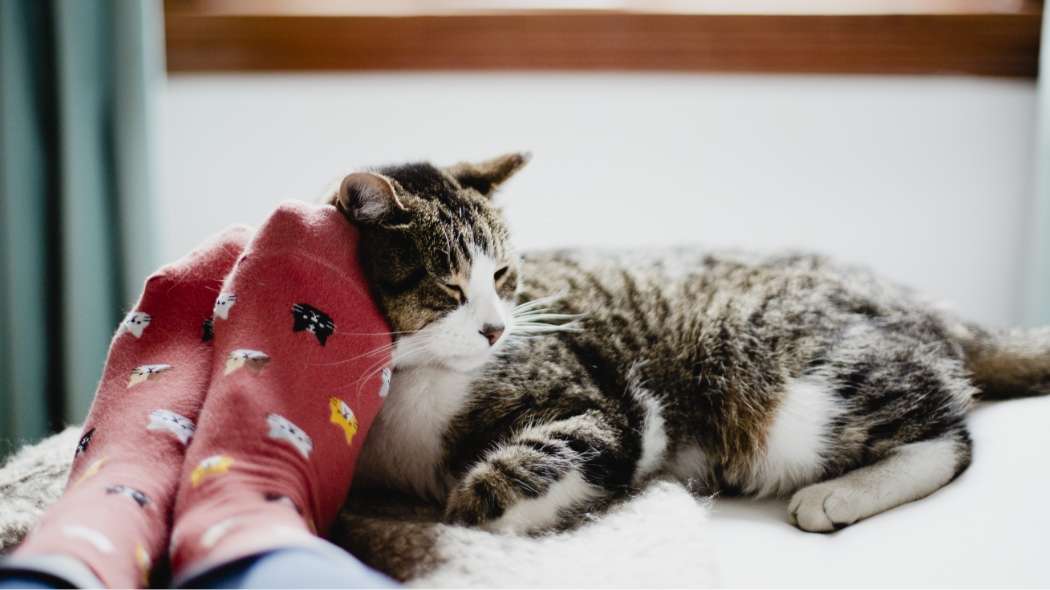how to spot osteoarthritis in your dog or cat at home
Osteoarthritis (OA) is a common degenerative joint condition that both dogs and cats experience. Historically, joint degradation has been an “old dog or cat” issue, but recent studies have shown that we need to be aware that it can affect younger pets too. That’s why it’s important to spot the signs early at home to help your pet have the best prognosis possible. While OA is not reversible, it’s possible to identify it, treat it, and help slow the progression to provide ease and comfort for your beloved pet.
First, let’s start with how to spot osteoarthritis at home.
Signs of osteoarthritis in dogs
- Stiffness in limbs
- Difficulty getting up
- Reluctance to go up and down stairs or get on furniture
- Losing interest in playing
- Sitting with a back leg loosely to the side
Signs of osteoarthritis in cats
- Difficulty getting up and down from furniture or cat tree
- Going pee or poo outside the litter box
- Matting or scruff from less self-grooming
Try to keep an eye out for these behaviors and symptoms. The earlier you spot these signs and get your furball to their veterinarian, the sooner you can help manage their symptoms and slow the progression of the disease. While some of these signs might seem like common “old age” behaviors, they could actually be treatable signs of OA.
Here are some helpful visuals of what to look out for in your dog.
Cats instinctively hide their pain, so detecting signs of OA can be more challenging. Look out for them going to the bathroom outside their litter box, having trouble getting up and down from elevated objects, and issues with their coat like dandruff, matting, or scruff.
Here are some helpful visuals of what to look out for in your cat.
Osteoarthritis and weight
There is no one cause for osteoarthritis. Some dog breeds are more prone to OA, and genetics, age, and stressful activities might also contribute to this often-painful degenerative joint disease. However, one common risk is obesity. Inactivity is a large contributor to weight gain in your pet, so helping them stay active with regular walks, runs, or playtime can help keep their weight under control to prevent, delay, or manage OA symptoms.
Talking with your vet
It's important to chat with your pet's veterinarian to confirm if your pet is overweight and if that’s contributing to OA symptoms. To help identify whether or not your pet has OA, they may perform a physical exam and X-rays, or run lab work. In addition to regular activity, your vet might recommend combination therapy for pain control, which may include joint supplements, daily chewables, therapeutic diets, acupuncture, or physical therapy. They may also recommend once-a-month injections called monoclonal antibody treatment, which are lab-created antibodies that help block pain signals in the brain.
Over at the Banfield shop, we offer a variety of oral or chewable osteoarthritis medication or injectables for both dogs and cats, which is available with a prescription from your veterinarian. Take a look at what we’ve got at the shop, and please check out our additional helpful OA resources here, here, and here.
 Mites and mange
Mites and mange Podcast - Not Just Fluff
Podcast - Not Just Fluff









